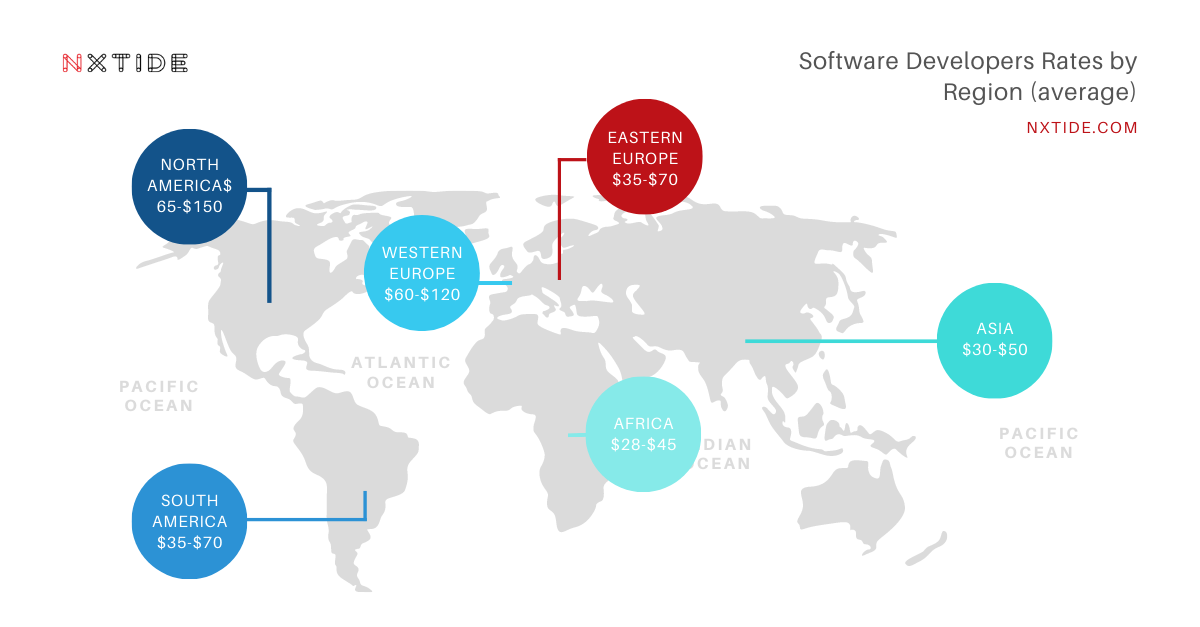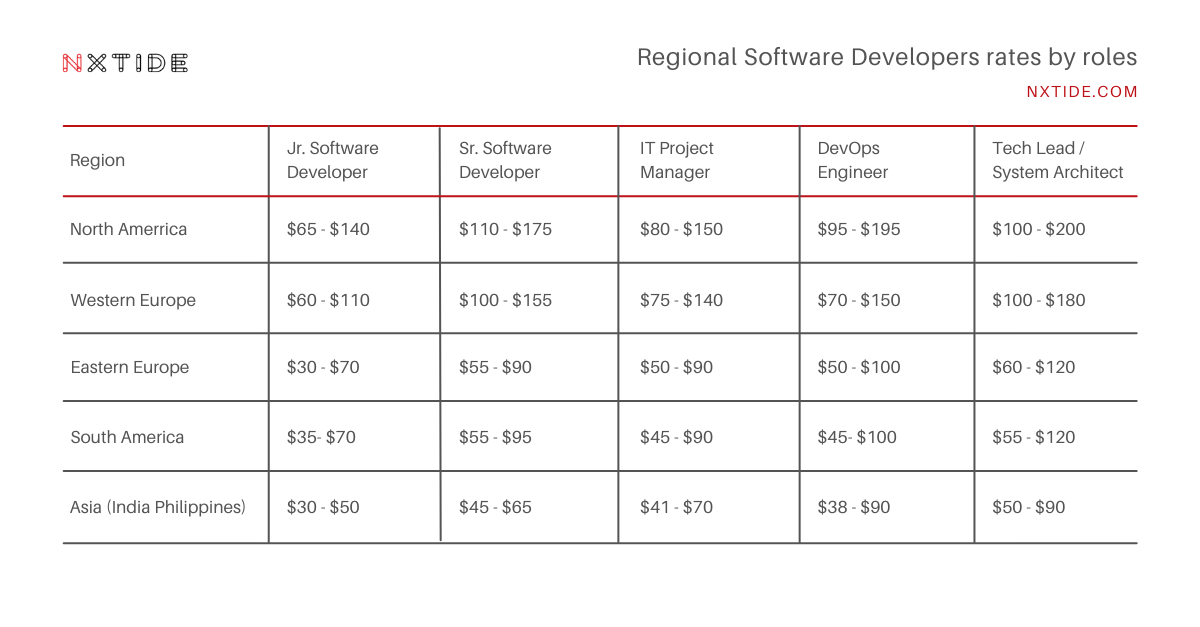How to Build a Great Software Development Team?

How to Build a Great Software Development Team?
Have you ever heard the phrase, that good software development teams don’t fall from trees? However, when many tech startups plan to create their next game-changing product, they picture a self-managed team of engineers who are passionate about their work. In truth, constructing a winning development group is not always as effortless as it seems. The qualities that separate a good software developer from a fantastic one are usually confidence and the ability to help achieve group goals.
Most development projects end prematurely because those working on them collectively and individually lack confidence in their success. In fact, 78% of IT professionals feel they don’t meet project requirements.
In this article, we’ll introduce you to some tried-and-true methods for building a successful software development team, including how to find the right talent and project management techniques.
What is this Development Team anyway?
Software development teams collaborate to create a technical project or product. Every member of the development team contributes to the accomplishment of this goal and should be held accountable for their work. Most importantly, software development teams must be self-organizing and cross-functional. Individualized and efficient work at the workplace improves the whole effectiveness of the team.
Development teams must work together to communicate and share responsibilities in order to be successful. There are several crucial characteristics that these teams should have:
– The team is naturally self-organizing where productivity depends on collective contributions.
– Teams are well-equipped and cross-functional; they possess all the team skills necessary to advance the product across all development stages. – Accountability is shared by the software development team as a whole, regardless of the skills and areas of interest of its individual members.
In terms of software development team culture, successful development teams include members that: – Leave the codebase cleaner than how they found it – Know and share the interests of their customer – Rather than directly criticizing people, they criticize their ideas – Share past and present experiences to offer new team insights – Have fun with each other and trust each other
What are the typical roles and responsibilities in a development team?
Defining the team members’ roles and responsibilities of a software team is key to production workflow. The following are critical business and technology-centered roles for any software development team.
The team roles can vary – but in most cases they contain the roles listed below.

Business Unit Manager
A business unit manager is a task manager of sorts. Their job is to make sure goals are being met and contribute to the company’s success in the long term. Some of their responsibilities include:
– initiating the project
– providing a clear project/product vision and strategic plan
– signing off-key milestones
Product Manager
Depending on the size of the company and its departments, a business manager may function as a product manager. Larger organizations, however, usually have separate roles for product and business managers. A product manager is in charge of the success of a specific product rather than the whole organization. The following are some of the essential tasks carried out by a product manager:
– translating the business unit manager’s project vision into a roadmap
– developing and defining the criteria and features of the product
Business Analyst
Business analysts play an important role in business development by working with both the technical and non-technical aspects of a project. They use data to improve processes and generate reports. Product managers collaborate with business analysts to further refine product features. A technical lead is also involved to make sure that all elements are ready for development prior. Business analysts may:
– clarify product features
– resolve queries between the technical lead and product manager
– ensure developers aren’t disrupted by business fluff
Project Manager Project managers play a vital role in ensuring that software development projects are completed on time and within budget. They work closely with business managers to ensure that all project goals are met.
To accomplish this, they are in charge of:
– scheduling, hosting, and documenting any relevant meetings.
– securing the software development team with the necessary resources to deliver their project – monitoring the performance of the software development team and making helpful suggestions
Technical Lead The technical lead is the key point of contact between software development and business management. They oversee company direction, act as a moderator between departments, and provide project managers with relevant information. Their role involves: – taking responsibility for the entire technical project – implementing the coding standards and procedures that work best – detailing the structure of the project and meeting requirements
Software Developer Developers make up the bare meat of the development team. Given that developers’ performance has a critical impact on product development and deployment, their time is spent wisely doing the following: – developing and deploying features – updating the technical lead and project manager with project reports
UI/ UX Designer These designers will be involved from start to end. User experience (UX) designers focus on the behavior of a software product, whereas user interface (UI) designers focus on the look or structure of a product. They are responsible for: – cooperating with the product manager to create a viable user experience that meets requirements – supporting the software development team throughout the build process
Quality Assurance / Product Tester
Simply said, a quality assurance tester’s knowledge of feature requirements and associated feedback may make or break a product. This person has the last word on whether project/product features are sufficient. Key responsibilities include:
– certifying that developers meet the criteria and conditions defined in the requirements.
– actively engaging with the development team and guiding them through the quality assurance process

4 crucial factors to look for when building a software teams
One of the most important choices you’ll make for your business is picking the right software development team. The group you choose will ultimately decide if your enterprise flourishes. Therefore, it’s critical that when you’re seeking talented individuals, you’re also looking for future company partners who share your vision.
It is integral that you comprehend the duties of the software development team you plan to hire. For example, who will be in charge of managing the team? Also, how many developers will be working on your project? Keep in mind that a software development journey can last anywhere from a few months to multiple years; thus, it’s monumental that the group you assemble is an ideal match for both your current project and long-term business goals.
When looking for individuals to join your software development team, the following ideas will get you started in the proper direction.
1. Critical thinking It’s important to find a development team that has the capacity to give you the finest solution and the most efficient approach to achieving it. This might imply your team differs from your first thoughts. However, refusing to agree to anything may be more effective than agreeing to everything. It indicates a willingness to seek out the greatest possible answer rather than blindly obey instructions.
2. Specific domain expertise Your agile software development team should not just be able to write code, but also have a strong focus on the user experience and business needs. You want experts with professional backgrounds and significant knowledge in the field to help guide your project.
3. Good track record of previous projects The ability to see potential team members’ past projects helps you predict the future quality of their work. Their portfolio can give you an understanding of what kinds of clients they are used to working with, as well as how successfully they have been in meeting project requirements and solving given problems. Don’t forget to check the references of your potential partners. Experienced software developers are happy to provide you with case studies, overviews of implemented projects, and all the necessary information that can help you make a decision.
4. Reasonable pricing (not too cheap) The cost of high-quality work is, after all, proportional to the quantity and quality of the materials used. Going for the lowest bid doesn’t always pan out. Poor communication, lack of expertise, badly written code, no tests, and poor documentation are just a few of the issues you might run into if you simply accept the cheapest price. Custom software development projects are more expensive than off-the-shelf software solutions, but the benefits they create are worth the price tag.

For more information regarding nearshore software development services rates please take a look at this article: https://nxtide.com/offshore-development-center/global-offshore-software-development-rates-comparison-by-country/.
10 Steps for Building and Managing a Successful Software Development Teams
In order to have a prosperous software development team, it is necessary to be involved in any and all activities that are critical to constructing and maintaining that success.
1. Professionalize the hiring process (personally or through software vendors) If you take charge of the hiring process, you can guarantee that you’re reaching out to the appropriate people. The following are some suggested sub-steps to help speed up the early phases of creating a software development team.
Define the job, not the skills for the job. You’ll have a better chance of landing your dream candidate if you write performance objectives rather than listing unnecessary field-specific skills and experiences. When hiring, center your job posting or recruitment scheme around four to five measurable tasks within the domain of expertise for the role you’re hoping to fill.
Publish listings that alienate passive candidates. To get started, add a compelling tagline to your title that catches the ideal candidate’s professional interests. If the chosen applicant is interested, have them submit a two-paragraph write-up describing their project work and expertise in past assignments. This technique will eliminate unqualified applicants while also limiting those who are simply looking for people who are truly qualified.
2. Hire people who are passionate about what they do Find developers that code their own projects and have passion projects they enjoy doing just for fun! Google implemented a 20 percent policy, which allows software employees to spend 20% of their time working on personal projects and ideas. According to business reports, the plan increased staff enthusiasm and energy.
3. Develop the team’s soft skills Soft skills, in particular, are more important than technical abilities when it comes to determining the success of your software development team. A well-developed project necessitates more than simply coding; a communicative and friendly staff is required. Emotional intelligence is critical for a collaborative project. Relatability and communication create real cohesion.
Foster cross-silo collaboration. Cross-functional project-oriented teams have become more essential for organizations that want to set themselves apart and remain competitive, especially in the technology industry. Recruiters seek out individuals who are comfortable working in a group. They also desire individuals who aren’t scared to give a second opinion or encourage team members to think outside of the box.
Prioritize social skills and communication. When managing a software development team, it’s all too easy to focus on technical output at the expense of team-building and communication. Establish a clear objective for your staff that emphasizes empathy and emotional intelligence as much as high-quality work. To do this you should: – Create opportunities for peer learning and teaching – Recognize distinct personality types amongst the team, and learn to work with their strengths and weaknesses – Make time for conversation!

4. Provide tools and a great environment for your software development team
Your software development team’s success partly comes down to you providing the tools and a conducive environment for creativity and collaboration. While your team is responsible for developing their soft skills, you’re responsible for making sure the workplace itself is comfortable. If you neglect your team’s livelihood and mental health, it could lead to high amounts of stress and burnout. Make sure your team has access to the resources and tools they need to grow quickly and effectively, without any frustration. This includes both technical resources and mental health references.
5. Listen actively and communicate clearly, transparently
The key to success in any business lies in good communication. As a manager, you need to be actively listening to your software development team at all times so that you can stay on top of the project and know what is going on. Ask questions such as: – What did you work on? – Did it come together as you expected? Why or why not? – What can be improved?
Use this technique to maintain your staff’s attention, engage them in the process of change, and develop a positive image of the organization. Also, communicate proactively and check up on individuals and teams without being asked. You’ll build significant relationships by establishing genuine concern for each person and department on the team.
6. Always seek to improve team communication
It’s critical to have fluid communication with your software development team, but it’s not always simple. If you’re having difficulties expressing yourself clearly, use these ideas as a guide.
Define roles and goals from the beginning Oftentimes, miscommunication stems from an unclear understanding of roles and responsibilities. Each agile project should have a clear kick-off with roles and goals clearly and comprehensively defined.
During kick-off meetings, you must discuss what the various roles will be and their expectations There should be an overview of how to recognize and address issues as they arise, with the understanding that things will change. The start serves as a foundation for the team, but it shouldn’t be inflexible or set in stone to the point where the team can’t adapt.
Encourage questions It’s essential to promote a healthy team dynamic that you never shoot down someone for asking a question. On the contrary, you should encourage questions from your team members. Not only will this develop communication skills, but it also creates an environment in which everyone feels valued and heard. Additionally, many times questions lead to improvements that the whole team can benefit from implementation.
Make mistakes Mistakes are unavoidable in agile, and they are a necessary component of the learning process. Mistakes should be encouraged and openly addressed, especially at the start of a project. The way a team handles mistakes may have an impact on its momentum and togetherness.
Host retrospective meetings Via roundtable meetings, the team can focus on what went right and what went wrong in a productive and non-occupational manner. This fosters a more transparent communication style.
Give feedback Establish a clear route of communication with the team and check in on each member to see how they’re feeling about important changes/existing circumstances. Creating a transparent feedback model with the team ensures that everyone is on an equal footing for further development.
7. Avoi burnout
Never overload your software development teams with more projects than they can feasibly handle at one time. Piling on multiple assignments will only lead to frustration and decreased productivity down the line. This is especially true if you’re asking them to focus on a single, long-term product or goal. As previously said, it’s critical to provide assistance to your employees and to respect their mental health as much as their technical skills. A happy developer is a better developer.

8. Don’t add extra manpower for a quick fix
If you want to maintain a fast development pace, don’t add extra team members. It might seem like more people would mean getting the work done faster, but it actually divides up the work into too many small parts and makes the project take longer. If you need to add more people to the team, do it gradually so that you can see how they affect results.
9. Try to develop software that people love and enjoy
It is pretty obvious. Regardless of the technical or business limitations, if your software is popular with consumers, team members will have a greater incentive to improve and maintain it.
10. Consider hiring remotely
Although there are many traditional employers who would scoff at the idea of transitioning to remote work, there are actually several key advantages to outsourcing remotely, including: – Heightened productivity – Businesses save money in the process – Workers avoid the stress of commuting – Employees save money – Access to global talent – Reduced employee turnover
One of the great ways is building a remote team in one, nearshore location. This type of team is called Nearshore Development Office. It’s a reasonable combination of in-house and remote teams benefits.
The final conclusion
With software and product development evolving more rapidly than ever, creating the appropriate software development team has never been more crucial. You can speed up your projects while also increasing output by following the steps outlined above with a carefully selected IT team of technical experts.

Create a Nearshore Software Development Office with NxTide
Over our 7-year company activity we have helped many US and EU companies to successfully build Software Development Teams and Software Development Centers in a variety of locations in Poland.
Interested? – Let’s discuss your case on a call.
Marcin Dziedzic, CEO of Pragmatic Coders and NxTide.
Looking for a solid nearshore software development company?
Opening a Nearshore Software Development Office in Poland can be a great opportunity for businesses looking to outsource their software development projects. By partnering with a reliable and experienced nearshore development company, you can get access to a team of skilled software developers who can help you deliver high-quality projects on time and within budget.
Looking for a Nearshore Development Office in Poland? Contact us now! We are a reliable and experienced nearshore development company with offices in Krakow, Warsaw, Katowice and more.
About Us:
NxTide is a specialized company focusing on building local, Software Development Teams or larger Software Development Centers in major cities in Poland. We take care of all recruitment and quality control processes making it faster and more cost-effective for you. Here is some more information about our expertise: – Over 7 years experience in creating a variety of software development teams – Over 60 teams and 300 engineers successfully hired and deployed – Several dedicated HR and IT Project Management Teams acting on your behalf.
Please take a closer look at a dedicated and flexible offer we have prepared based on market needs:
1) Software Development Teams: dedicated to clients looking to expand their software development teams or create small remote teams from scratch.
2) Offshore Development Center: dedicated to larger and permanent projects. We’ve implemented the innovative Build Operate Transfer model to make the whole process faster, more efficient, and transparent.
3) Nearshore Software Development Office: dedicated to larger and permanent projects within the same region, continent.

Kraków
Over 0,8M population, 13% of total IT Engineers supply

Warsaw
Over 1,8M population, 24% of total IT Engineers supply

Wrocław
Over 0,7M population, 12% of total IT Engineers supply

Katowice
Over 1,8M population, 9% of total IT Engineers supply

Poznań
Over 0,7M population, 8% of total IT Engineers supply

Łódź
Over 0,7M population, 7% of total IT Engineers supply

Gdańsk
Over 0,6M population, 6% of total IT Engineers supply

Bydgoszcz
Over 0,5M population, 4% of total IT Engineers supply
Other related articles that might interests you:

How to reduce employee turnover and increase retention – insights for the CTO.
Home How to reduce employee turnover and increase retention - insights for the CTO. It's no secret that the tech…

Web Applications Development – The Best Practices Guide
Home Web Applications Development - The Best Practices Guide 2022 was another year of opportunities and options for successful web…

The Global Shortage of Software Developers and Its Serious Implication in the Comming Years.
Home The Global Shortage of Software Developers and Its Serious Implication in the Comming Years. The Global Shortage of Software…
